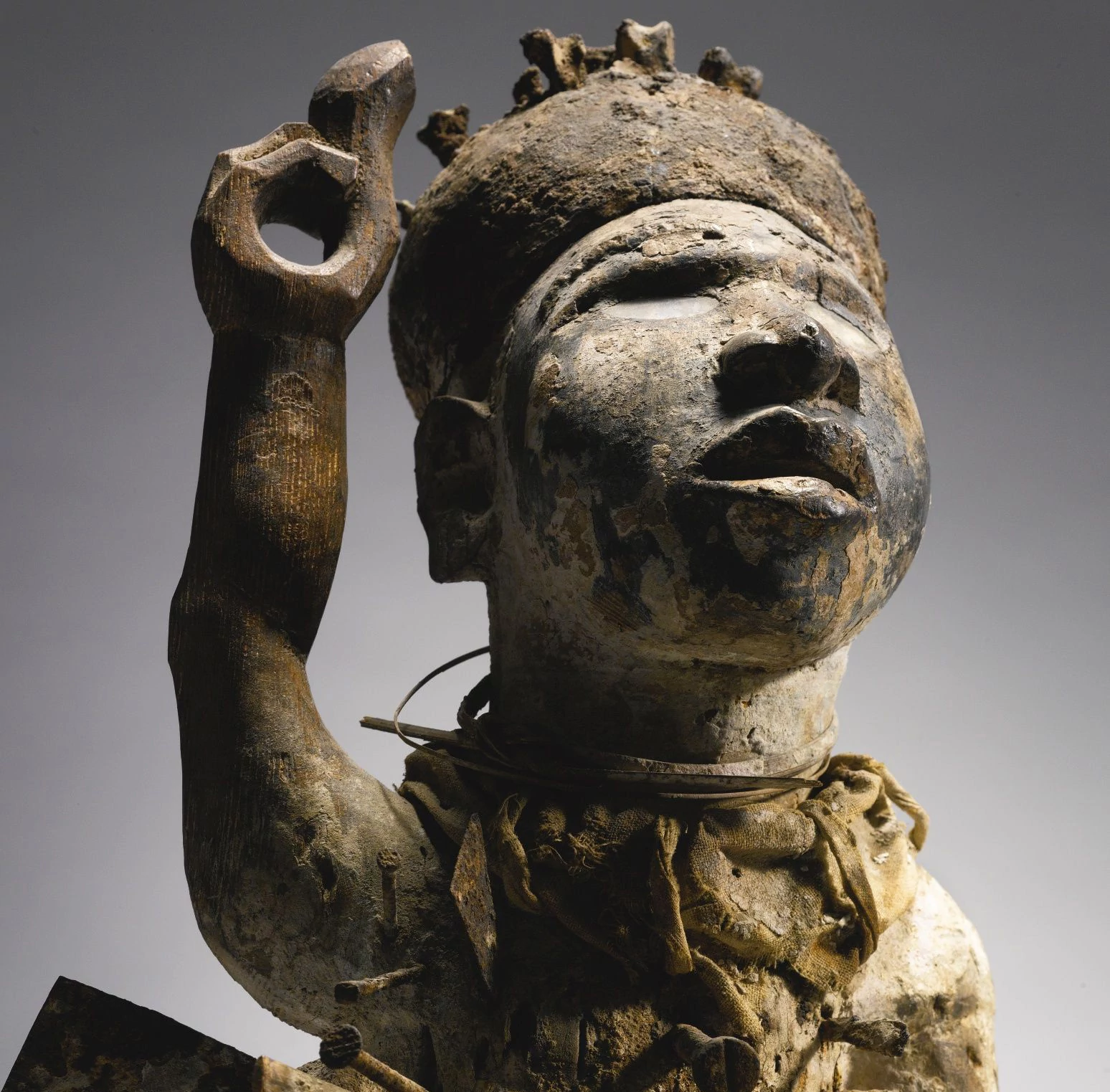Kingdom of Kongo
500 years of spirit objects and power plays


At the end of the 14th century, a royal marriage between competing kingdoms birthed Lukeni lua Nimi, the founder of the Kingdom of Kongo: an African superpower that united the continent from the Atlantic Ocean through present day northern Angola, western DRC, and southern Gabon, and became a portrait of the bloody cross of colonizing Christianity.
The year was 1400, and the royal son Lukeni lua Nimi has conquered the kingdom of Mwene Kabunga and captured the mountain-top city of Mbanza Kongo. The flourishing city was the largest population center in the region, and the the hub of extensive trade routes for ivory, copper, raffia cloth, and pottery—putting unparalleled resources and soldiers at the new king’s disposal. With the mountain city at his back, Lukeni lua Nimi and his sons expanded their control to neighboring kingdoms and their influence far beyond, building a dynasty that ruled uncontested for 150 years.
Everything changed in 1483. The explorer Diogo Cão was sailing down the African coast erecting large stone crosses called padrão, claiming Portugal’s divine right to African lands. Arriving at the Congo river, Diogo detoured upriver and became the first European to enter the Kingdom of Kongo. When he left, he brought a few daring Kongo noblemen back to Portugal. The nobles returned two years later, indoctrinated with Spanish Catholicism. In 1491, Diogo and a priest baptized Nzinga a Nkuwu, the current King of Kongo, who took a new Christian name: João the First.
This was a political conversion. The explorers arrived with carpenters, priests, and soldiers with European weapons. Nzinga a Nkuwu, now João I, recognized the power that aligning himself with the Portuguese could provide. Later in life Nkuwu renounced his Catholic faith, but the deal had already been struck. His son Afonso was a true believer, and made Catholicism the state-religion of the Kingdom of Kongo.
From this point the political history of Kongo is a nightmare. As the kingdom grew, they sold thousands of captured prisoners, men, women and children from nearby kingdoms, as slaves to the Portuguese. Over and over the throne violently changed hands between factions divided along family lines. Four wars soaked the Kingdom in blood, Kongo’s alliance with the Portuguese dragging them into conflicts first with neighboring kingdoms, then with Dutch invaders from Angola. Eventually Kongo sided with the Dutch against the Portuguese, and after the death of the Kongo king in the Battle of Mbwila, the Kingdom fell into forty years of civil war.
When retelling history it’s easy to fixate on kings and strategic battles, and gloss over the people who lived and worked and made art in the midst of turmoil. But in the world of the Kongo, political violence and uncertainty shaped the development of a unique sculptural tradition: the Nkisi.
A Nkisi, or Minkisi in plural, is the home of a spirit. While we don't know when the tradition of creating Minkisi was developed, we do know that communicating with ancestors was a core belief among the religions of the Kongo, even after the spread of Catholicism. Banganga, religious leaders, were responsible for healing, divining the future, and harnessing the power of the dead. These shamans partnered with craftsmen to create Minkisi. Minkisi took many forms, from clay vessels or shells packed with symbolic substances to the striking Power Figures, humanoid wooden sculptures remarkable for their expression and naturalism.
Minkisi are potent objects, both visually and spiritually, because they are tools to regain control in a tumultuous society. Each Nkisi was created with intention, containing materials to support their goal, for instance bird claws in to catch a thief, or red ochre to channel the dead. Many Minkisi are stuck through with iron nails, which may appear alarming, but are actually a recording device: each nail representing a vow, a signed treaty, or a ritual the Nkisi was witness too.
...
Got questions, comments or corrections about Kingdom of Kongo? Join the conversation in our Discord, and if you enjoy content like this, consider becoming a member for exclusive essays, downloadables, and discounts in the Obelisk Store.